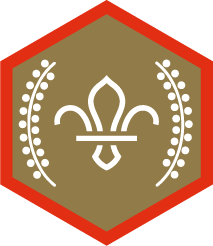
Change of plan
You’ll need
- Pens or pencils
- A4 paper
- Activity equipment
Before you begin
- The person leading the activity should make sure that there are a number of activities planned out for the next meeting. These activities should ideally include some equipment (eg sports gear, outdoor clothing, camping gear, game pieces). Make sure that everyone in the group knows what they’re meant to be doing in the meeting.
- The person leading the activity should hide some of the equipment for these activities. The activities should now need changing in order for them to go ahead. For example, if you were setting up a camp in that meeting, you could hide the tent poles and pegs. If you were playing a ball game, you could hide the balls. Make some clues (eg arrows) to show where the equipment is hidden.
Run the activity
- The person leading the activity should act as if nothing has changed and ask some people to help by fetching the equipment for the planned activities. When they can’t find what they’re looking for, explain that the equipment for the activity has gone missing.
- Everyone should get into small groups. The person leading the activity should give each group pens or pencils and some paper. Each group should plan a way of doing the activity without the missing equipment. Give everyone 15 minutes.
For example, if they were setting up camp and the tent poles and pegs were missing, they’ll need to find something else to use as poles or pegs. If they were going to play a ball game and the ball’s missing, they’ll need to find something else to use as a ball. - Everyone should present their way of doing the activity to the rest of the group. Take a vote on which method is the best.
If it helps (and if there’s time) you could try out a few of the new methods to see which works best. - Run some of the activities to see how they work. When there are 15 minutes of the meeting remaining, get everyone together again. See how everyone thought the activities went and whether they picked the right way to do the activity without the equipment. Find out if anyone struggled to do the activity this way or if anyone actually preferred the activity this way. Ask if there are any changes anyone would make if the equipment went missing again.
- The person leading the activity should point out that some people return home to find that they have no food or no power. People whose lives change quickly, from things such as losing their job or having their working hours reduced, may struggle to keep up with their finances or find themselves at risk of becoming homeless are likely to struggle to find even the most basic things. See if the group can think of any solutions for people who can’t find food, water, shelter or power (electricity and gas).
- If there’s time, the person leading the activity should set out the clues so that everyone can go and hunt for the hidden equipment.

This activity helps contribute towards some of the UN's Sustainable Development Goals. Find out more about the SDGs, and how Scouts across the world are getting involved.


Reflection
The group had to do their activities in a slightly different way, after some of their basic equipment went missing. How did you decide on ways to do the activities without the equipment? What necessary items did you need to replace and how did you find an alternative? How did you make sure that you had enough time for the activity, after having planned it out again? What do you think it would be like if this was something that happened often, but instead of equipment going missing, the issue was a lack of food, water, shelter or power?
Safety
All activities must be safely managed. You must complete a thorough risk assessment and take appropriate steps to reduce risk. Use the safety checklist to help you plan and risk assess your activity. Always get approval for the activity, and have suitable supervision and an InTouch process.
- Heavy and awkward objects
Never lift or move heavy or awkward items alone. Ask for help or, if possible, break them down into smaller parts.
Remove more or less equipment to increase or decrease the difficulty. Finding the equipment again will depend on how many hiding places you can think of!
If your activities require fast reactions or movements, you could challenge the groups to think about ways to make them accessible without the equipment. The person leading the activity should double-check that everyone’s solutions are suitable for people with accessibility needs.
All Scout activities should be inclusive and accessible.
Everyone should choose one thing that they use regularly, but could live without (eg a gadget or device). They should think of ways that they can live for a week without that item. Everyone should try to do the activities they’d normally do and see how much more difficult they are, or whether they can think of a better way of doing the activity.
Let the group come up with their own ways of doing activities without the necessary equipment.





